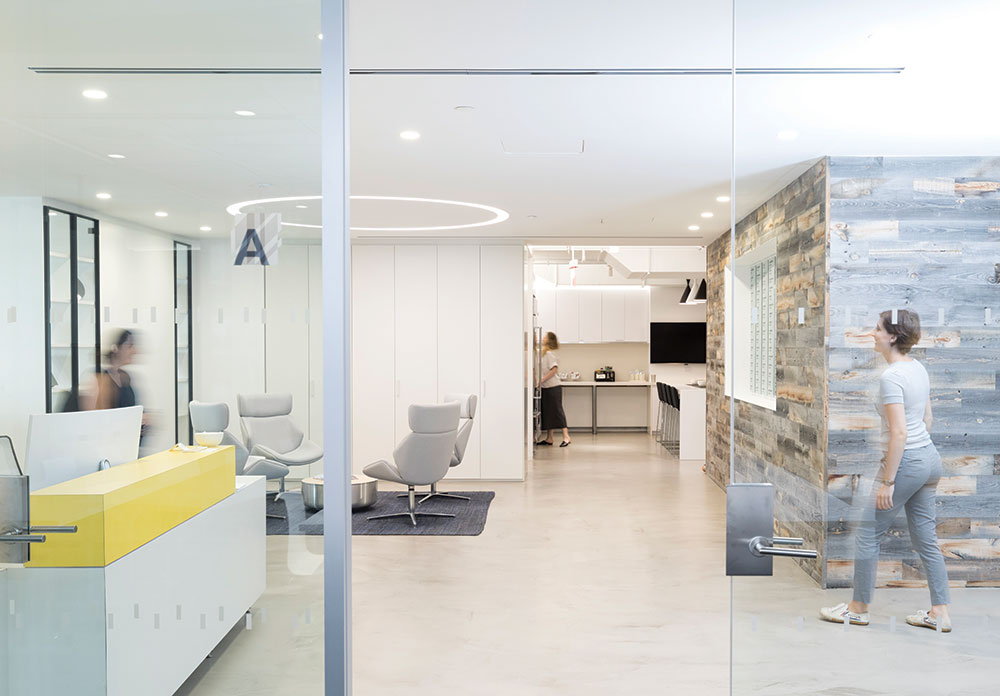Inside the Redesign
After 25 years at 120 Wall Street in Manhattan’s Financial District, the IES has a new and improved home in the same space the Society moved into in 1993. The address is one of few similarities between the original and remodeled office, as acknowledged by IES President Lance Bennett during a champagne toast at an open-house event for the new space in July: “The way I describe the old facility was an office with a million dollar view,” Bennett said. “Now it’s a million dollar office with a million dollar view.”
With updated amenities and built-in technologies enabling videoconferencing and interactive meetings, the modernized headquarters, designed by The Switzer Group, doubles as a space for IES Members to visit and use for professional purposes, representing a step forward in the Society’s pursuit of a strategic plan established in 2014. “This office renovation was not done with just the IES staff in mind, but also the membership,” says IES Executive Director Timothy Licitra. “This is a space that our members can freely use and be proud to call our headquarters.”
IES President Lance Bennett toasted the opening of the Society’s redesigned office, where he will join the ranks of past presidents proudly on display in the lobby, beside a plaque honoring the Society’s founding. Photos: © Helga Traxler/@photosalonhelga
Martin van Koolbergen and Dayuan Fu of KGM Architectural Lighting—the designers responsible for illuminating the new space—were also in attendance at the open house. “It was a challenge knowing the design would be highly scrutinized by members of the lighting community who will be using the space for a multitude of functions,” Fu said. “A combination of budget-driven direct, indirect and hybrid fixtures were used throughout. Depending on the location, lights are either controlled locally or by zones to respond to daylight or individual’s needs. The project demonstrates that with a few key moves, artificial lighting is not a competitor to, but rather a collaborator with, the abundance of daylight in the new space.”

